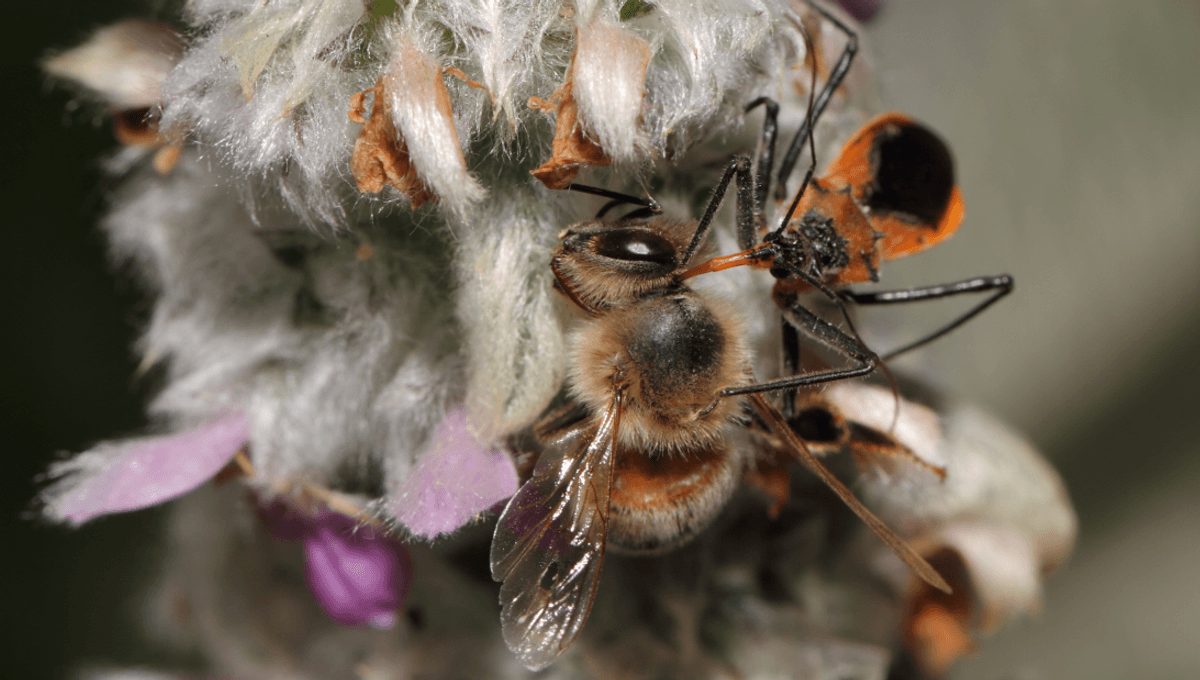
When it comes to murdering things, assassin bugs don’t mess around. Famous for wearing the corpses of their victims as accessories, they’ve now been given an extra murderous accolade as research has found evidence for tool use in their hunting strategy.
The research centered around an Australian group of assassin bugs, Gorareduvius sp., that are known to coat themselves in sticky plant resin. The researchers on a new paper thought that this could give them an advantage in hunting scenarios.
To find out, they ran a series of predator-prey trials using assassin bugs with access to resin and other bugs without. The unlucky prey enrolled included flies and ants, both staples in the assassin bug’s natural diet. The researchers also observed assassin bugs in the field to see how closely their lab behavior mirrored that in a natural setting.
The observations revealed that when given the opportunity, assassin bugs do indeed love scraping off resin and meticulously rubbing it all over their bodies, with special attention paid to the forelegs. This occurred even in juvenile assassin bugs that had been raised in isolation, demonstrating it’s an innate behavior.
Sticky forelegs appeared to have a hugely beneficial impact on an assassin bug’s predation success in the lab trials, boosting their chances by 20 percent. Resin-deprived assassins had to make twice as many attempts before a successful attack compared to their sticky bandit counterparts.
“Spinifex resin conveyed a predatory advantage to the assassin bugs,” concluded the authors. “This advantage likely derived from the resin’s adhesive properties. Prey could still escape after being touched by the assassin bugs, but this was less likely to happen if the assassin bugs were equipped with resin.”
The assassin bugs’ preference for sticky plant resin was perhaps mirrored by the fact that most of the individuals retrieved from Saddleback Ridge in Australia were found on spinifex grass, Triodia bitextura. It seems that resin has many uses for assassin bugs, also helpful in protecting their eggs – but in this case, it’s their manipulation of a plant product in predation attempts that the researchers conclude constitutes tool use.
It seems the assassins are creative across the board. So named for their lethal hunting technique, assassin bugs use their long proboscis to pierce prey, often ants, before injecting saliva laced with a paralyzing agent and enzymes that dissolve tissue. They then suck up the contents until all that remains is a hollow exoskeleton.
Some species will even take things a step further. Not wanting to waste a perfectly good corpse, they fashion the bodies into a sort of morbid backpack. Assassin bugs can be seen walking around with as many as 20 dead ants glued to their back, often forming a lump that’s larger than the living bug itself.
The MET Gala has nothing on these guys.
The study is published in the journal Biology Letters.
[H/T: Futurism]
Source Link: Tool Use Confirmed In Australia's Assassin Bugs That Use Resin To Snag Prey